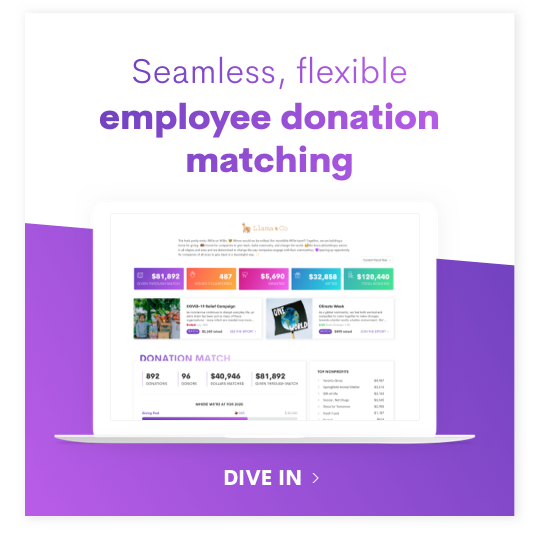Environmental, Social, and Governance policies are great initiatives for everyone involved. But unless they have a clear, demonstrated impact on the business and the world around it, it’s hard to tell whether they’ve had the intended effect.
Enter ESG reporting. ESG reporting means the disclosure of the information in a company’s performance of any of these three areas. Think of it as a quick snapshot, a way for a company to gauge its success and learn how to improve for the future. By using disclosures in ESG reporting, a company can reveal key insights to all the stakeholders.
What is a company doing to improve sustainability? How responsible is corporate governance being? Without effective reporting, these questions can be difficult to ask. With good ESG reporting standards in place, a company can identify the key metrics in areas that are difficult to gauge, such as climate change. A company can also adjust its strategy, consult with key stakeholders, and use its ESG data to propel future efforts.
Why is ESG Reporting Important?
ESG reporting is important because ESG performance hinges upon it. Everything from a company’s commitment to lowering emissions to propelling its decision making process can hinge on the quality of its ESG reporting. The problem is that ESG reporting isn’t always like financial reporting. It’s not strictly a set of numbers.
One key difference: ESG reporting depends upon disclosures. Disclosures, both qualitative and quantitative, can give a company an idea of where it stands on more than just regulatory responsibilities. It can discover more about every benchmark it sets for itself, going beyond financial performance and into its impact on climate change and its long-term sustainable development goals.
Let’s put that in tangible terms. According to some research, companies with high ESG performance are getting higher returns on their investments while lowering their risks during a crisis. In other words, a company with effective ESG reporting and ESG disclosures has improved results. They become more resilient, more forward-thinking, and better capable of identifying key business opportunities.
What is the Challenge Currently?
One reason companies seek out ESG reporting and ESG disclosures? They need to know what they’re capable of. A company can’t seek out a vital capital-intensive project without understanding key regulatory issues such as sustainability and environmental impact. For example, a company that prioritizes sustainability can build a stronger long-term business model than a company that fails to take ESG reporting into account as it consults its key decision makers.
That’s not the only challenge. Some companies don’t know how to use ESG reporting in a way that delivers key ESG metrics to fuel these decisions. How is a company supposed to create an effective ESG strategy relating to its new initiatives if it doesn’t yet have the insights necessary to create accurate estimates of impact? By creating an ESG reporting framework, a company can sidestep these issues and get to the heart of what makes every initiative successful: elements like ESG.
What are Popular ESG Frameworks?
Popular ESG frameworks include:
The Global Reporting Initiative. The GRI is an independent organization reporting on sustainability. Many people talk about the “GRI standards” in the context of ESG reporting, and for good reason. Global Reporting Initiative disclosures help publicize ESG information to companies who need to better understand the impact of business on the world.
The Sustainability Accounting Standards Board (SASB). The SASB puts its primary focus on helping the governance in organizations better communicate their sustainability initiatives to investors. Corporate sustainability is the name of the game here: by taking in vital ESG factors and measuring them in the context of what a business does, the SASB helps bring clarity to what can otherwise seem like a difficult area to measure.
The Task Force on Climate-Related Financial Disclosures. What is a company’s impact on the environment, and what does it have to do with a company’s finances? That’s the question posed here.
These frameworks are more than just places a business can consult to learn more about ESG topics. They can provide industry-specific knowledge to companies and institutional investors who often feel that they don’t have a grip on how to measure ESG. From supply chain impacts to sustainability issues, many of the topics covered under the ESG umbrella can seem intangible and vague. These popular ESG frameworks help solve that by using a repeatable reporting process against which companies can measure themselves.
For many companies focused on value creation and not disclosure requirements, these ESG frameworks and standards might come across as difficult to understand. But it’s not hard to see how it can help to measure a company’s impact on human rights. Key investment decisions working through an ESG filter can improve risk management and produce an annual report they’re proud to release to the public.
An Example of a Basic ESG Checklist
Build a team. This team will explore the methodologies, reporting requirements, and standards for filings, giving you a reporting framework that encompasses all of the key ESG issues.
Seek out experts in ESG. The experts who know how to seek out and find the key data to guide your ESG initiatives can bring tremendous value to the table. Public companies, in particular, have to know that their responsibilities for filing requirements are so vast that seeking out experts for consultation can be the only way forward.
Create a communication strategy that brings everyone involved. Think of your organization as almost like a “United Nations” of ESG. You’re not going to conduct these initiatives in isolation. You’re going to engage all relevant stakeholders and key decision-makers until all financial information relevant to ESG is in plain sight.
From there, you can continually improve your ESG efforts and refine your approach as you see fit.



